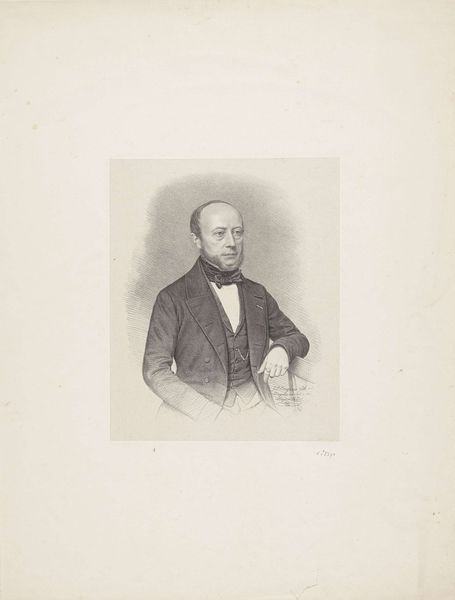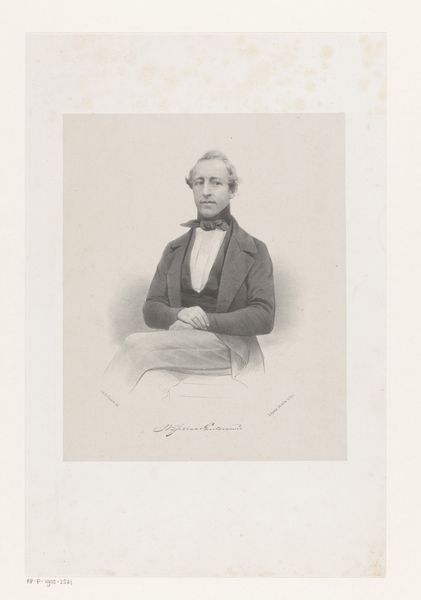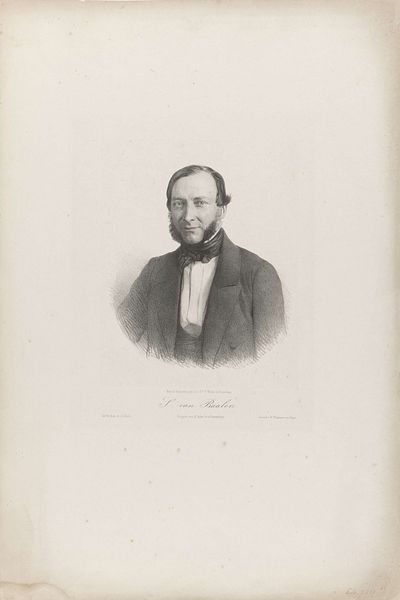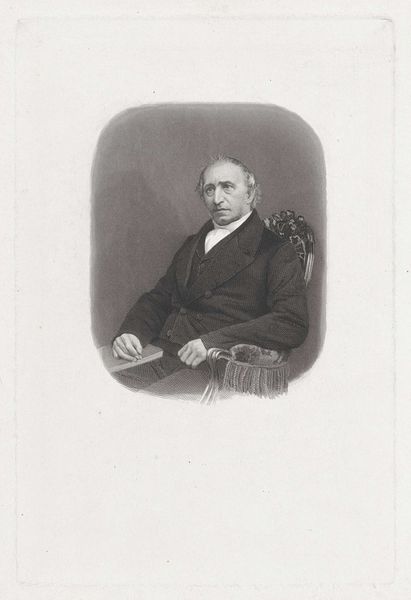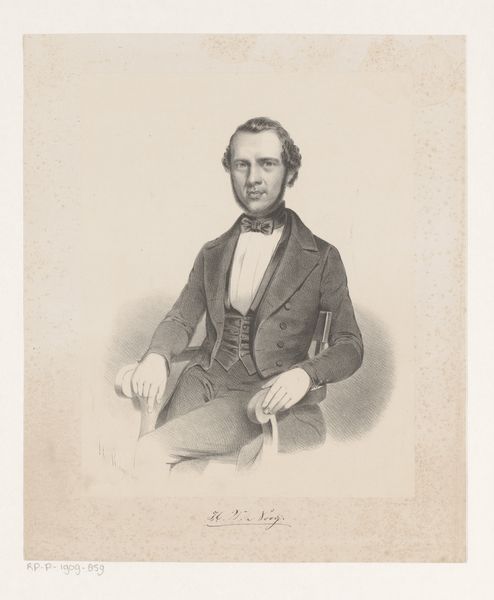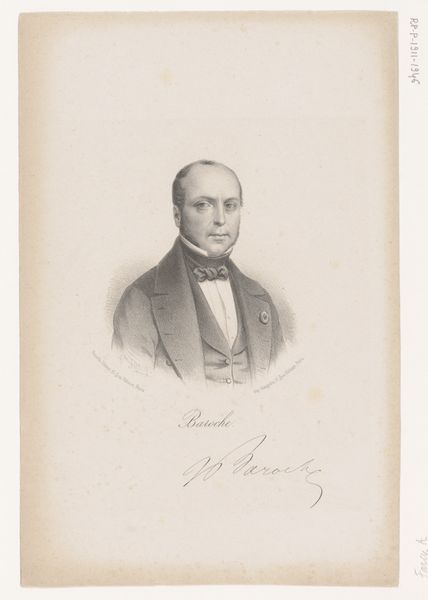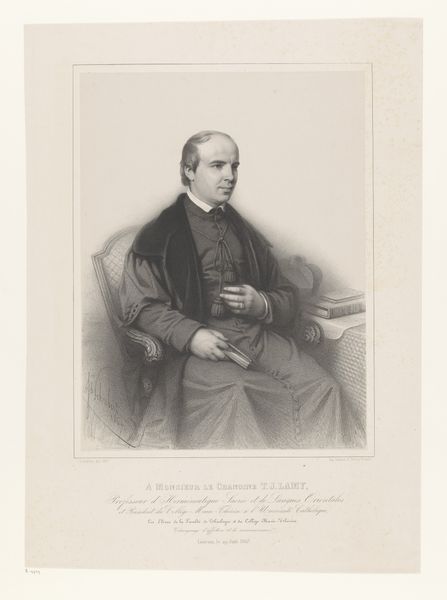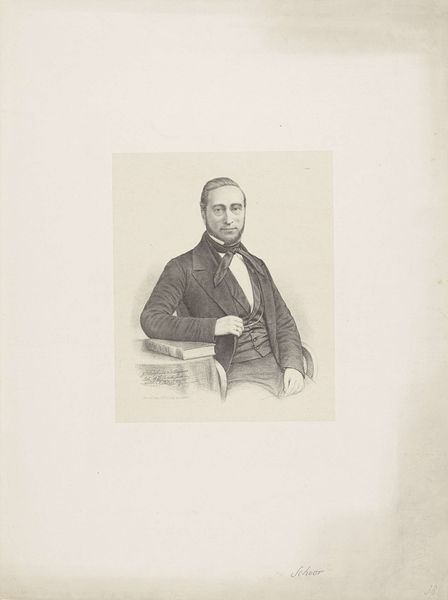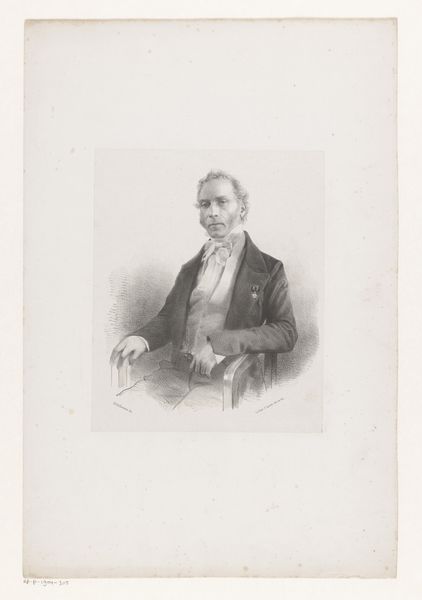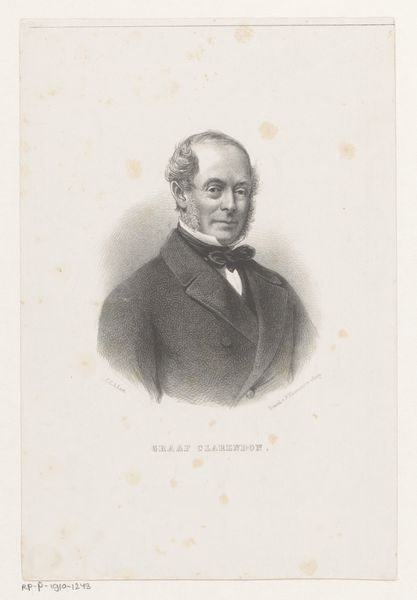
Dimensions: height 502 mm, width 375 mm
Copyright: Rijks Museum: Open Domain
Editor: This is “Portret van Elisa Laurillard,” a graphite drawing from 1861. It's a rather formal portrait; he seems to be staring right through me. What stands out to you? Curator: The sitter's gaze is certainly commanding, isn't it? Notice how the artist used the book to anchor the subject in a world of intellect and societal expectation. The placement is deliberate, lending to a sense of learnedness and status. Does it trigger in you anything of what it meant to be learned at the time? Editor: Status, yes, but I hadn't thought about learnedness. It's interesting how that single prop changes the entire impression. Is that kind of subtle messaging typical of portraiture from this period? Curator: Indeed. Think about the semiotics of the period. Dress, posture, and the presence, or absence, of certain objects become signifiers of character. The carefully constructed image becomes a potent cultural artifact that communicates not just likeness, but aspiration. Note that despite it being a Romantic era piece, academic lines and a certain rigidity remind us of the sitter's societal role. Is there any tension in those signs? Editor: Now that you point it out, absolutely! He almost seems trapped by his social position. The drawing style feels very controlled, as well. Curator: It speaks to the constraints and expectations placed upon individuals like Laurillard within that era, doesn't it? The symbol of the book, traditionally a key to unlocking personal worlds, paradoxically becomes another boundary. Editor: This has been fascinating; seeing beyond just a likeness and into a narrative. Curator: Exactly, we decode these symbols to see their influence on the cultural landscape and our collective memory.
Comments
No comments
Be the first to comment and join the conversation on the ultimate creative platform.
